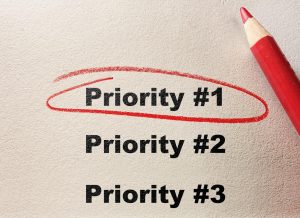Going on a vacation is more than just taking a break from the stress of your day-to-day and having a good time – it actually keeps you healthier.
Fewer Americans are going on vacation now than in the past: Data suggests that Americans used to take practically three weeks of vacation a year in 2000, but in 2015 they took just slightly more than two weeks. Even when people are on vacation, more than 60% say they keep working remotely. That means over the past 15 years, Americans have lost nearly a week of vacation.
Our culture places so much pressure on working hard and not stopping, but in reality, without taking time off to recharge, many people can become less productive at work. Employers should encourage employees to take vacations day every once in a while to keep energy levels up. Workers who take steady time to relax are less likely to experience burnout, making them more creative and useful than their well-worn, under-rested counterparts.
“One study found that three days after vacation, subjects’ physical complaints, their quality of sleep and mood had improved as compared to before vacation. These gains were still present five weeks later, especially in those who had more personal time and overall satisfaction during their vacations.”
Vacations Cost How Much?
However, poorly planned vacations can actually lead to more stress – those that said they had a bad vacation also said they left planning to last minute. With summer right around the corner and the ever-increasing price of vacations, let’s talk about planning and saving.
ValuePenguin found that the average cost of a 4-night domestic trip is $581, and the average cost of a 12-night international trip is $3,215. If you want to take a vacation in late August or September that gives you more than two to three months to save some serious cash. However, unless you already have money saved, an international trip is probably out of the question this summer. But that doesn’t mean you can’t continue to save after the summer for an international getaway!
Easy-to-Do Savings Ideas
- Brown-Bagging Lunch – Everyone eats lunch, and on average most of us are choosing to buy lunch at least a couple of times throughout the week. Each bought lunch averages about $11 a piece, so opting to pack can quickly help save. Let’s say you replace two meals out with a brown bag, that’s a $22 savings. We spend about $8 packing lunch so you potentially could be saving $14 a week just packing a few extra days.
- Cut Down on Grocery Bills – Our grocery bills vary from month to month, and while there are a million ways to shop more strategically for groceries, a few we’ve found effective are: only buying fresh (in season) produce, meal-prepping, and scanning several stores for sales before buying. Also, chances are you have some foods you always push to the back of the cabinets so go ahead and start using them before buying a lot of new items.
- Reduce Entertainment Spending – If you enjoy going to the movies on hot summer days, then you already know how expensive it is – a single movie ticket can cost you upwards of $10 – $15. Instead of going out, consider getting cozy at home with a Netflix Subscription. Alternatively, you can also look into movie ticket subscription services such as MoviePass or Sinemia which provide you movie tickets for as little as $6.95/month and $4.99/month respectively.
- Freeze the Gym Membership – During the summer opting to cancel the gym membership and exercise outside is a great way you can easily save around $40 to $50 a month. Some gyms may even allow you to freeze your membership for a few months, so don’t forget to ask before you cancel.
- Make Coffee at Home – I’ll admit it’s a real cliché to say to skip the morning coffee to help save money. However, it’s a cliché for a reason – the average amount spent on a morning cup of Joe is $2.70, which if you get a cup each morning, could equate to $13.50 in savings each week.
- Stop Spending – It’s always easier said than done, but the best way to save is to cut back spending. If you shop online or buy new things often, cutting it out even for just a few months can allow you to focus on your active savings goals.
In order to save for a vacation, you don’t have to make all these changes, and you certainly don’t have to do them all at the same time. But if you’re ready for a vacation, whether for this summer or the future, taking these small steps to build your savings can help ensure you don’t end up bringing the costs of that vacation home with you.
Read the full article here








